Global Market Comments
May 19, 2020
Fiat Lux
Featured Trade:
(THE 2020 DARK HORSES OF BIOTECH)
(AMRN), (THOR), (SAN), (NBSE), (OHRP),
(MRNA), (MRK), (AZN), (VRTX), (RGLS), (ARWR)
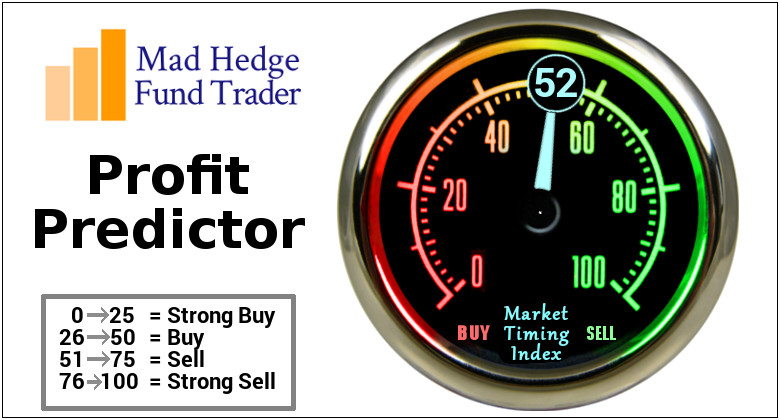
Global Market Comments
May 19, 2020
Fiat Lux
Featured Trade:
(THE 2020 DARK HORSES OF BIOTECH)
(AMRN), (THOR), (SAN), (NBSE), (OHRP),
(MRNA), (MRK), (AZN), (VRTX), (RGLS), (ARWR)

One of our dark horses came in a big winner this morning.
No, I did not go to the Golden Gate Fields race track on San Francisco Bay and win big on a horse with 5:1 odds, although I might as well have.
Moderna (MRNA) soared to $85 this morning on news of a successful trial of a new Covid-19 vaccine. We recommended it on January 19 at $17.78 for precisely this reason.
Never mind that the trial only involved a mere eight patients, involved RNA, and won’t be available in bulk for two years. That’s all the market wants to hear today.
So, if you are interested in playing the long shot game, I am re-running my January 9 research piece, which was sent out to paid subscribers of the Mad Hedge Biotech & Healthcare Letter. If you want to subscribe to the letter, which has been pulling in long shots on a weekly bases recently, please click here.
For all the flak the healthcare sector has received for the exorbitant prices of its products and services, there’s no denying the fact that this industry had an incredibly remarkable decade -- and biotechnology proved to be one of the most lucrative markets when it comes to stocks that actually double or triple in value, sometimes even overnight.
The primary reason for this is that no one could predict the success or failure of clinical trials with any degree of accuracy, forcing investors to take into account elements of surprise in the valuation process in biotech.
Companies that analysts believe to be prime candidates for acquisition early on in their life cycle would end up repeatedly failing to lure viable tender offers for years. Meanwhile, dark horses emerge from the leftfield and snap up the best deals.
A good case in point would be how experts and investors alike missed the mark on Amarin Pharmaceutical’s (AMRN) cardiovascular treatment Vascepa. On the outset, analysts pegged the new prescription omega-3 treatment as a failure and a money sinkhole.
Instead, Vascepa surpassed all expectations and is now hailed as the fish oil supplement to demonstrate clear-cut cardiovascular benefits to high-risk heart attack patients.
In 2019 alone, Vascepa grew by 85% compared to its 2018 report, coming in between $410 million and $425 million in sales -- and 2020 is expected to be an even better year for this drug as sales are estimated to reach between $650 million and $700 million.
Another example is synthetic protein maker Synthorx (THOR), which was initially tagged as an ominous stock.
The company proved detractors wrong when it went on to fetch huge offers from giant biotech firms, with Sanofi SA (SAN) winning the bidding war over Synthorx to the tune of $2.5 billion.
This new year, though, promises to offer more predictability, especially on the merger and acquisition front.
Several blue-chip biotechs are on the verge of key patent expirations in the next decade. On top of that, these companies are facing tremendous pressure from US politicians to cut down on the prices of their brand name drugs. Today, the State of California announced that it was going into the generic drug industry to undercut the majors.
These dual headwinds are expected to fuel an uptick in the demand for bolt-on acquisitions, which can provide the giant biotechs with healthy levels of profit via large sales volumes as they attempt to slash their slashes to acceptable levels.
With this in mind, big biopharmas will be willing to shell out top dollar to acquire promising companies this 2020.
Which biotechs have the goods to take full advantage of this acquisition demand?
One up and coming company tagged as a red-hot acquisition candidate is NeuBase Therapeutics (NBSE).
Founded in 2018, this Pittsburgh company has raked in $9 million in funding so far to develop treatments that target rare, genetic neurological disorders. Neubase’s platform called peptide-nucleic acid antisense oligonucleotide or PATrOL technology was developed at Carnegie Melon University.
Basically, this technology offers gene-silencing therapies for its patients suffering from rare genetic disorders.
In July 2019, NeuBase engaged in a reverse merger with fellow biotech innovator Ohr Pharmaceuticals (OHRP). This partnership is expected to rake in massive rewards since both companies greatly complement each other’s work.
NeuBase’s work zeroes in on curing rare genetic diseases via gene-silencing treatments while Ohr’s research is geared towards helping patients suffering from cancer cachexia and macular degeneration.
The combined efforts of these two should result in a wider reach as they offer cutting edge treatments to highly lucrative and specialized markets.
As of December 2019, NeuBase has a recorded market cap of $114.38 million. Considering all its assets and the way its pipeline is shaping up, NeuBase could easily be your best sleeper stock in 2020.
Another biotech company to watch out for this year is Moderna Inc (MRNA), which has raised a whopping $1.8 billion in funding over 10 rounds.
So far, this company has attracted blue-chip companies in the form of Merck and Co (MRK), which invested $125 million, and AstraZeneca (AZN) with $474 million so far.
In terms of stability, Moderna has been doing quite well for itself with $68.2 million in estimated annual revenue.
In 2019, Moderna shared that it has at least 11 programs set for clinical trials along with 20 development candidates. Its research leans towards producing cancer vaccines and localized regenerative therapeutics.
Its strategic alliances not only with AstraZeneca and Merck but also with Vertex Pharmaceuticals (VRTX), Biomedical Advanced Research and Development Authority, and even the Bill & Melinda Gates Foundation equip Moderna with a remarkable competitive edge against rivals Regulus Therapeutics (RGLS), Arrowhead Pharmaceuticals (ARWR), and CureVac.
I’m expecting huge movements in the biotech market in 2020 as the curtain rises on all these promising technologies and the rise of this industry becomes impossible to ignore.
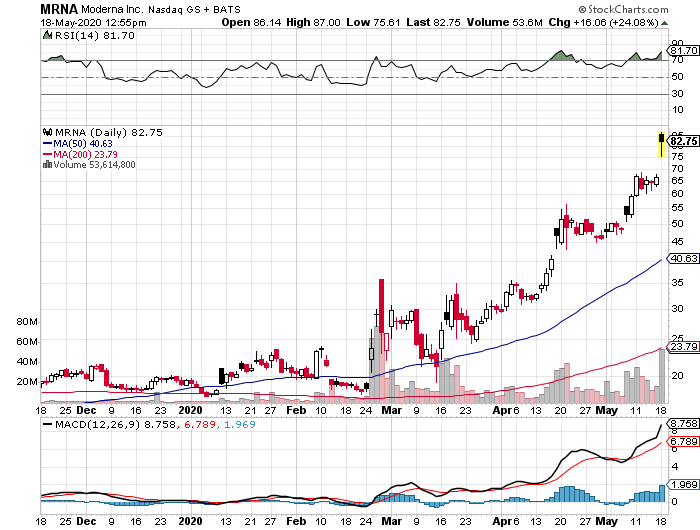
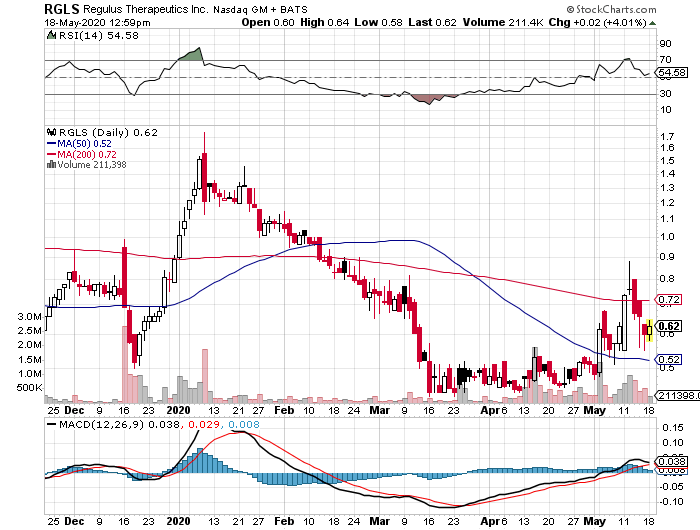
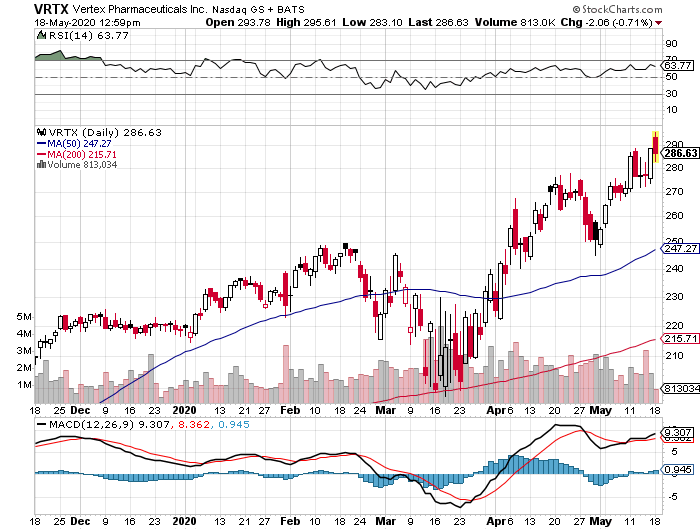

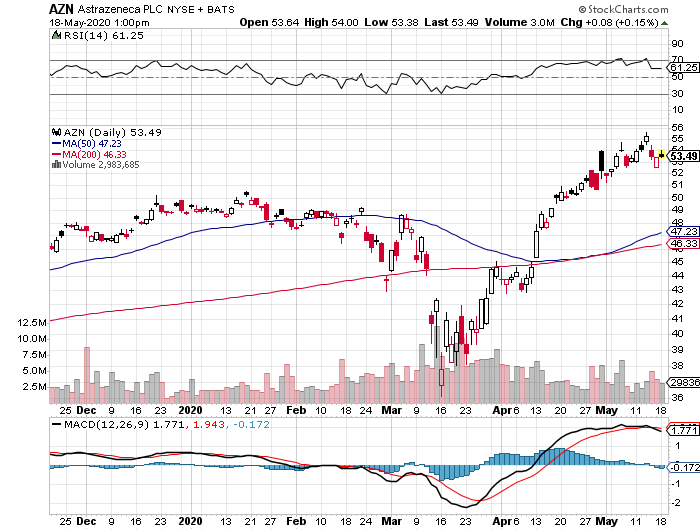
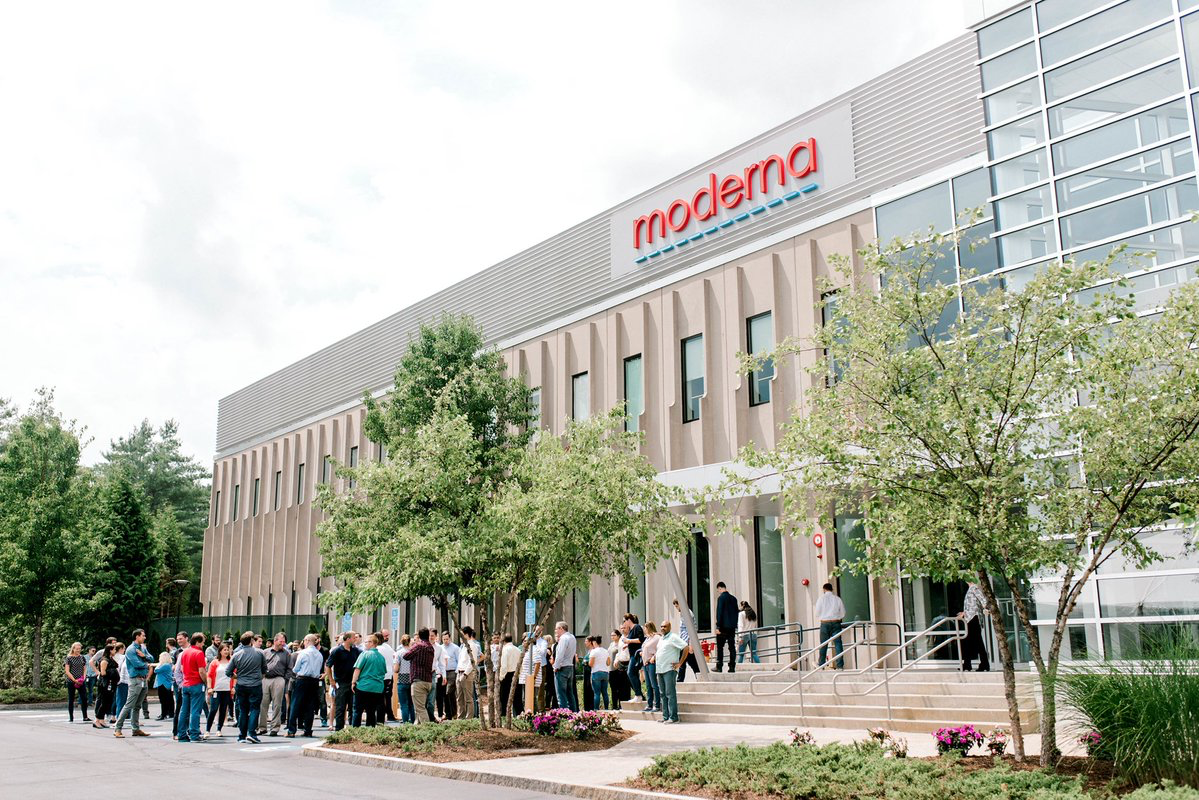
Mad Hedge Biotech & Healthcare Letter
January 9, 2020
Fiat Lux
Featured Trade:
(THE 2020 DARK HORSES OF BIOTECH)
(AMRN), (THOR), (SAN), (NBSE), (OHRP),
(MRNA), (MRK), (AZN), (VRTX), (RGLS), (ARWR)
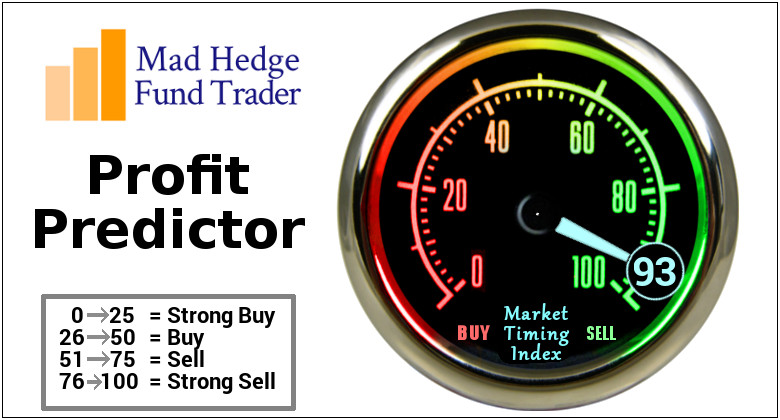
For all the flak the healthcare sector has received for the exorbitant prices of its products and services, there’s no denying the fact that this industry had an incredibly remarkable decade -- and biotechnology proved to be one of the most lucrative markets when it comes to stocks that actually double or triple in value, sometimes even overnight.
The primary reason for this is that no one could predict the success or failure of clinical trials with any degree of accuracy, forcing investors to take into account elements of surprise in the valuation process in biotech.
Companies that analysts believe to be prime candidates for acquisition early on in their life cycle would end up repeatedly failing to lure viable tender offers for years. Meanwhile, dark horses emerge from the leftfield and snap up the best deals.
A good case in point would be how experts and investors alike missed the mark on Amarin Pharmaceutical’s (AMRN) cardiovascular treatment Vascepa. On the outset, analysts pegged the new prescription omega-3 treatment as a failure and a money sinkhole.
Instead, Vascepa surpassed all expectations and is now hailed as the fish oil supplement to demonstrate clear-cut cardiovascular benefits to high-risk heart attack patients.
In 2019 alone, Vascepa grew by 85% compared to its 2018 report, coming in between $410 million and $425 million in sales -- and 2020 is expected to be an even better year for this drug as sales are estimated to reach between $650 million and $700 million.
Another example is synthetic protein maker Synthorx (THOR), which was initially tagged as an ominous stock.
The company proved detractors wrong when it went on to fetch huge offers from giant biotech firms, with Sanofi SA (SAN) winning the bidding war over Synthorx to the tune of $2.5 billion.
This new year, though, promises to offer more predictability, especially on the merger and acquisition front.
Several blue-chip biotech’s are on the verge of key patent expirations in the next decade. On top of that, these companies are facing tremendous pressure from US politicians to cut down on the prices of their brand name drugs. Today, the State of California announced that it was going into the generic drug industry to undercut the majors.
These dual headwinds are expected to fuel an uptick in the demand for bolt-on acquisitions, which can provide the giant biotech’s with healthy levels of profit via large sales volumes as they attempt to slash their slashes to acceptable levels.
With this in mind, big biopharma’s will be willing to shell out top dollar to acquire promising companies this 2020.
Which biotech’s have the goods to take full advantage of this acquisition demand?
One up-and-coming company tagged as a red-hot acquisition candidate is NeuBase Therapeutics (NBSE).
Founded in 2018, this Pittsburgh company has raked in $9 million in funding so far to develop treatments that target rare, genetic neurological disorders. Neubase’s platform, called peptide-nucleic acid antisense oligonucleotide or PATrOL technology, was developed at Carnegie Melon University.
Basically, this technology offers gene-silencing therapies for its patients suffering from rare genetic disorders.
In July 2019, NeuBase engaged in a reverse merger with fellow biotech innovator Ohr Pharmaceuticals (OHRP). This partnership is expected to rake in massive rewards since both companies greatly complement each other’s work.
NeuBase’s work zeroes in on curing rare genetic diseases via gene-silencing treatments while Ohr’s research is geared towards helping patients suffering from cancer cachexia and macular degeneration.
The combined efforts of these two should result in a wider reach as they offer cutting-edge treatments to highly lucrative and specialized markets.
As of December 2019, NeuBase has a recorded market cap of $114.38 million. Considering all its assets and the way its pipeline is shaping up, NeuBase could easily be your best sleeper stock in 2020.
Another biotech company to watch out for this year is Moderna Inc (MRNA), which has raised a whopping $1.8 billion in funding over 10 rounds.
So far, this company has attracted blue-chip companies in the form of Merck and Co (MRK), which invested $125 million, and AstraZeneca (AZN) with $474 million so far.
In terms of stability, Moderna has been doing quite well for itself with $68.2 million in estimated annual revenue.
In 2019, Moderna shared that it has at least 11 programs set for clinical trials along with 20 development candidates. Its research leans towards producing cancer vaccines and localized regenerative therapeutics.
Its strategic alliances not only with AstraZeneca and Merck but also with Vertex Pharmaceuticals (VRTX), Biomedical Advanced Research and Development Authority, and even the Bill & Melinda Gates Foundation equip Moderna with a remarkable competitive edge against rivals Regulus Therapeutics (RGLS), Arrowhead Pharmaceuticals (ARWR), and CureVac.
I’m expecting huge movements in the biotech market in 2020 as the curtain rises on all these promising technologies and the rise of this industry becomes impossible to ignore.
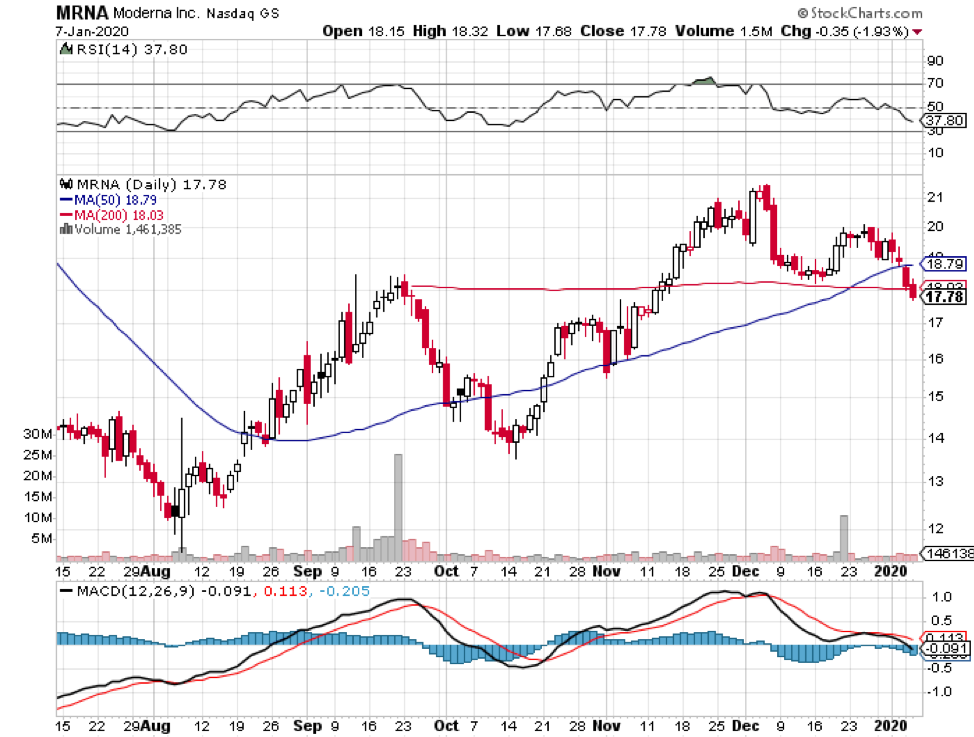
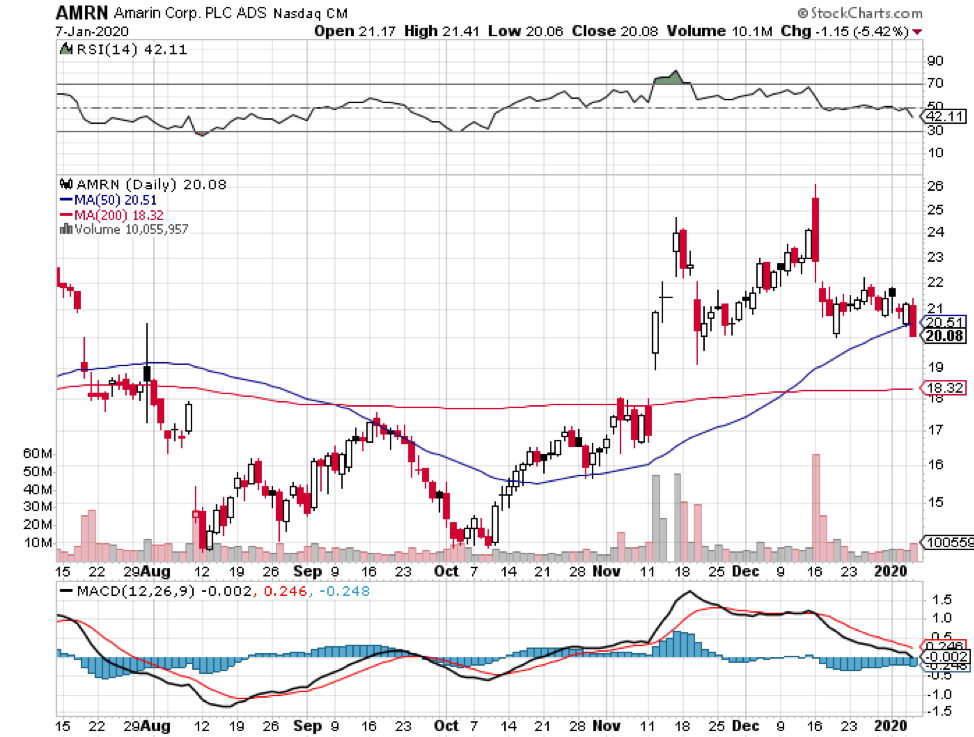
Mad Hedge Biotech & Healthcare Letter
December 17, 2019
Fiat Lux
Featured Trade:
(WHY THE M&A BOOM WILL SPILL INTO 2020),
(BMY), (CELG), (NOVN), (LOXO), (ROG), (ONCE), (MRK), (SAN), (ARQL), (THOR), (AMRN), (GSK), (AMGN), (GILD)
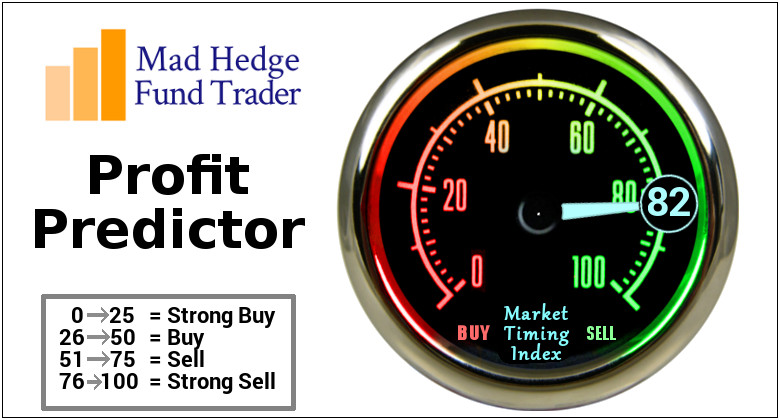
The biotech industry is breaking out, with the sector witnessing tremendous growth in the later part of 2019. With the stocks surging, it looks like the new year is setting up to a strong start that could continue well up into 2020.
Despite the anxiety over the feared government price controls in the drug sector, the early thinking in the biotech world remains optimistic. In fact, the stage seems to be set for even bigger news come 2020. This prediction comes on the heels of the over $7 billion deals closed just this summer alone.
To date, approximately $100 billion total potential value of research and development have been spent by biotech companies since June 2019, with $11 billion paid upfront in cash.
Among those deals, the biggest so far is Bristol-Myers Squibb’s (BMY) $74 billion acquisition of Celgene (CELG). Another massive agreement is Novartis AG’s (NOVN) $9.7 billion acquisition of The Medicines Company (MDCO).
Eli Lilly and Co’s (LLY) $8 billion takeover of rare genetic mutation drug Vitakvi creator, Loxo Oncology (LOXO), also signified notable movements in the industry along with Johnson and Johnson’s (JNJ) $5.8 billion buyout of robotic surgery company Auris Health. Even Roche Holding AG (ROG) is expected to complete its $4.3 billion merger with gene therapy company Spark Therapeutics (ONCE) before the year ends.
Not far behind are Merck and Co’s (MRK) $2.7 billion acquisition of ArQule (ARQL) as well as Sanofi SA’s (SAN) $2.5 billion buyout of clinical-stage DNA base pair treatment company Synthorx Inc (THOR).
The majority of the deals were in the oncology space, with three times as many oncology deals made compared to the number two sector, the neurology sector. To put things in perspective, seven of the top 10 deals made in 2019 involved oncology treatments.
What can we expect in 2020?
A number of drug candidates remain in the pipeline, but one mid-cap biotech company is anticipated to make big bucks next year. The catch? It’ll need the help of a bigger and more established company to make it happen. That is, this promising company has become the most eligible buyout candidate for 2020.
Amarin Corporation (AMRN) has taken center stage when it became the first-ever company to hit positive results for its prescription omega-3 treatment, Vascepa -- a feat that none of the other biotech giants managed to accomplish. Actually, competitor GlaxoSmithKline (GSK) created its own omega-3 treatment, Lovaza, only to have it fail to reach its goal.
Barring any major setback, Vascepa is slated as the next blockbuster treatment in the cardiovascular disease space -- possibly even displacing Pfizer’s (PFE) Lipitor as the king of this segment. In fact, several major healthcare groups like the American Heart Association, American Diabetes Association, the European Society of Cardiology have already endorsed Vascepa as an effective treatment for LDL cholesterol.
The Amarin medication is projected to peak at $4 billion in annual revenues by 2028. Considering that its manufacturer’s reported third-quarter earnings this 2019 is only at $112.4 million, the approval of Vascepa will undoubtedly be a game-changer for its investors.
However, Vascepa’s incredible potential along with the fact that Amarin has no other drug candidate in its pipeline makes the company ripe for a takeover. For one, it’s not financially capable of juggling both the marketing of Vascepa and developing or building a solid pipeline to support its growth. With the omega-3 treatment’s projected blockbuster status, a bigger and more established company could undoubtedly be more fit to help it reach its potential.
Who are the potential suitors?
Three heavyweights have been repeatedly linked to Amarin: Pfizer, Novartis, and Amgen (AMGN). Since all three have a budding cardiovascular unit, it could be anyone’s game.
However, Novartis’ recent acquisition of The Medicines Company makes it the least likely candidate in the list right now. After all, the latter already has a potential blockbuster cholesterol-lowering drug in Inclisiran.
That paves the way for a new suitor in the form of Gilead Sciences (GILD). Just a few weeks ago, Gilead added Vascepa to one of its ongoing trials involving nonalcoholic steatohepatitis. Whether or not this signifies interest in buying out Amarin is anybody’s guess.
Heading into the next year, the biotech sector is expected to welcome the new year with strong fundamentals and great opportunities for outperformance. While the election may bring changes to policies, the ongoing growth and innovation in this industry make it impossible to be excited for what’s in store for the future.
After all, more and more life-extending and even life-saving treatments are getting discovered by the day. Aside from following the developments in the industry, why not use your knowledge to fatten your pocketbook along the way?
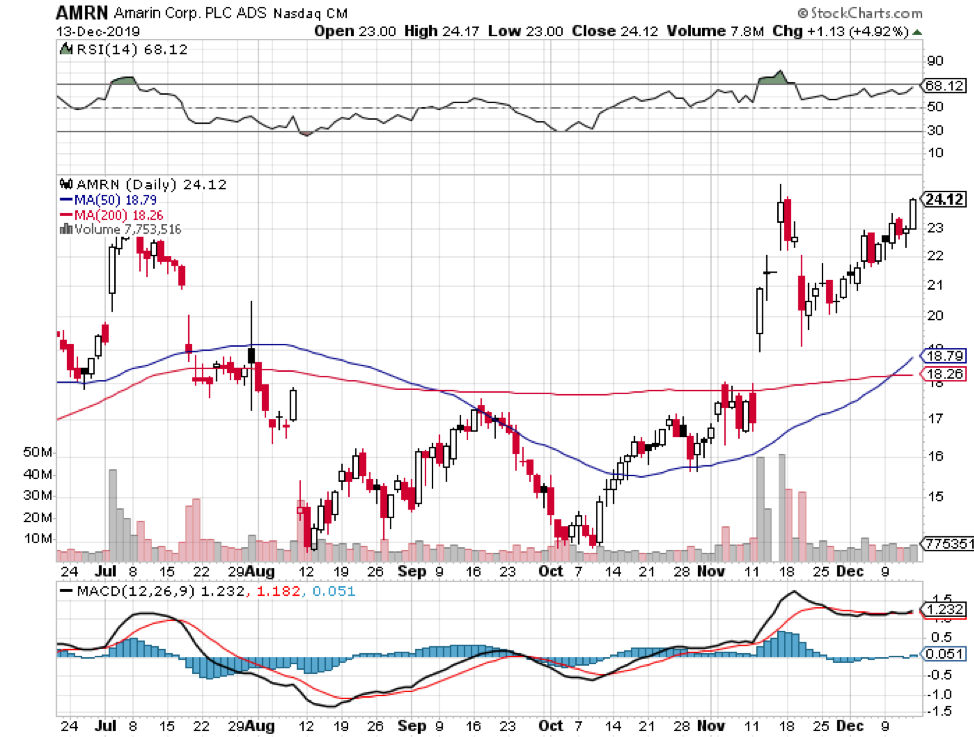
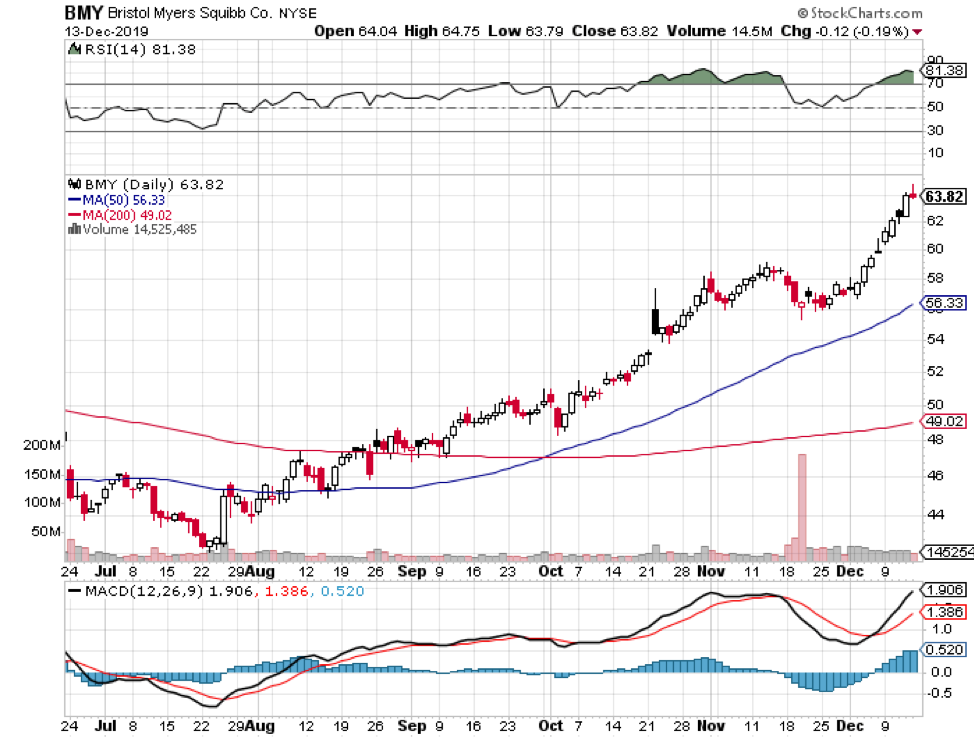
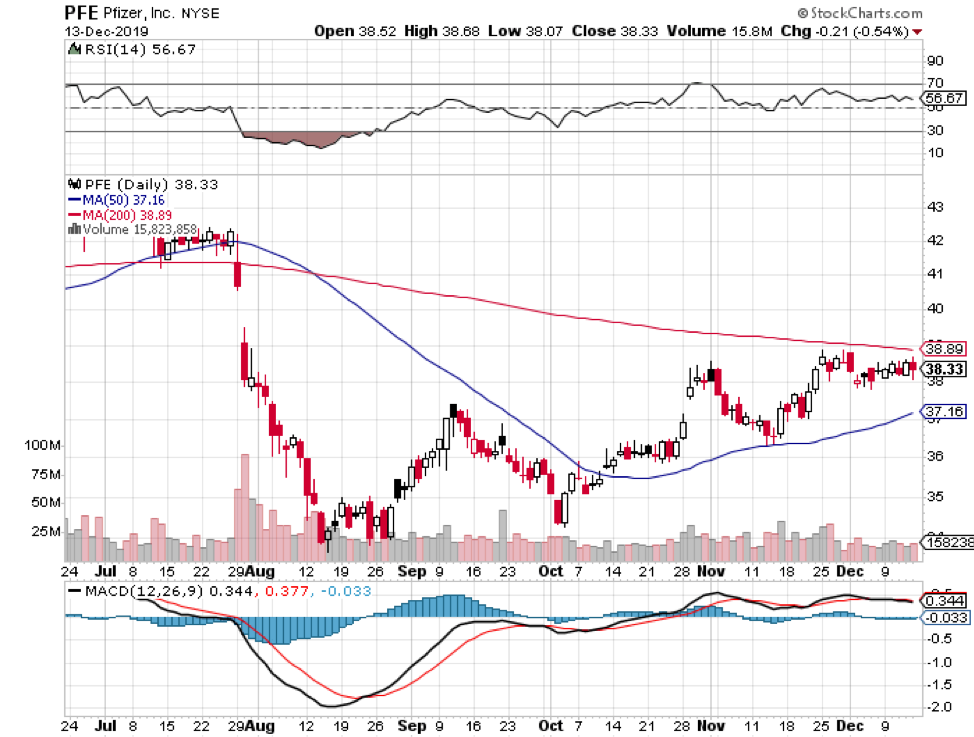
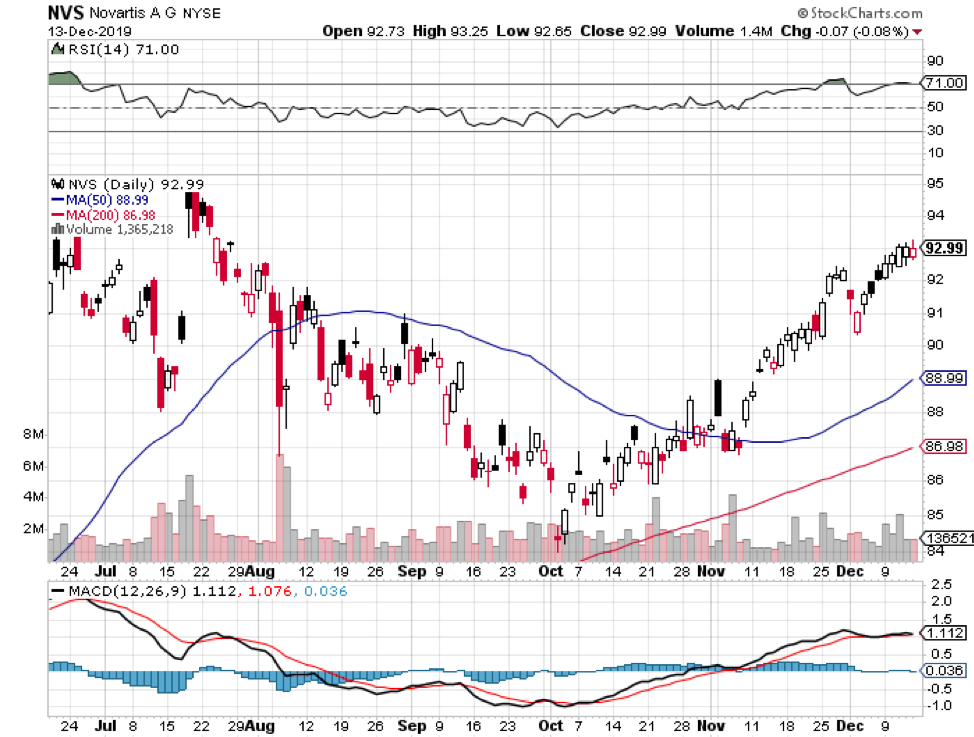
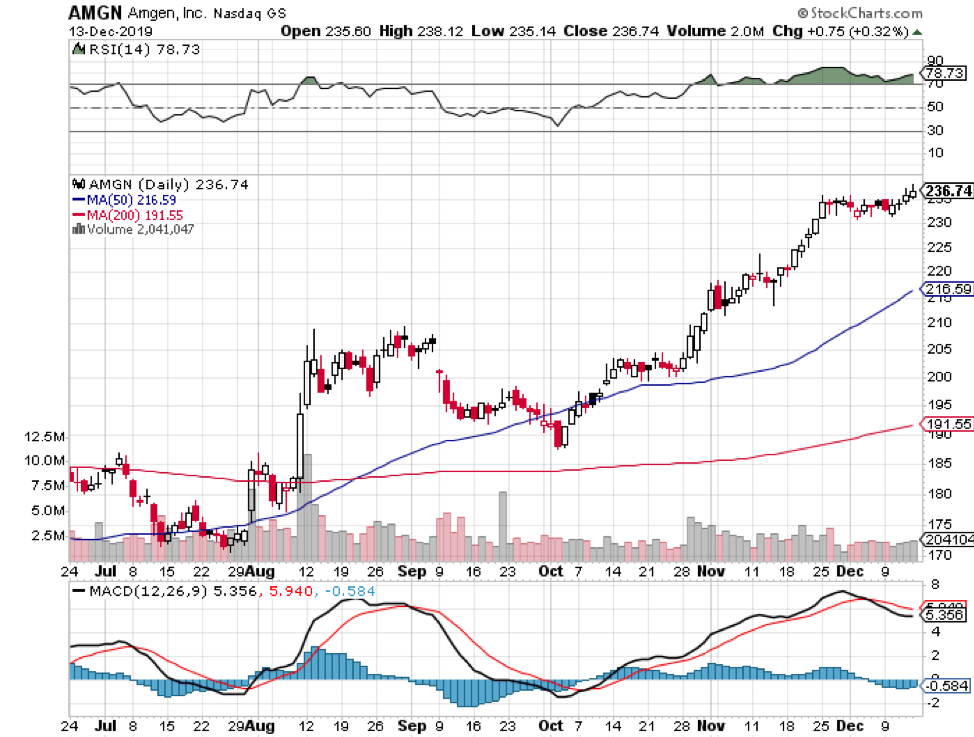
With the increase of globalization, investing in foreign stocks can be a smart move. Many Americans have low exposure to foreign equities in their portfolio believing that US stocks are safer and more reliable. However, investing in foreign stocks can help to decrease risk, diversify your portfolio, give you access to emerging markets, and deliver dividend yields that you can only dream about at home.
France Telecom (FTE), the largest telecom operator in France, is a favorite target of yield hungry hedge funds. Earlier this year, the company?s revenue and growth declined due to the entry of a lower cost mobile operator Iliad S.A. (ILD.PA). Iliad offers SIM-only plans, which bypass the cost of having to buy a new phone. In its first quarter ever, Iliad added 2.6 million subscribers, taking many from France Telecom and its competitors.
Although Iliad?s entrance into the wireless market was impressive, SIM-only customers account for less than 5% of total users. Despite the difficult competitive and economic conditions France Telecom faces, they have recently experienced large customer growth, as 320,000 domestic consumers have switched back to their mobile service.
Customer growth is occurring internationally as well, with strategic marketing campaigns targeted in Africa and the Middle East. In fact, their Africa and Middle East segments have become their key drivers of growth over the past year. France Telecom currently pays one of the largest dividends in the telecom industry, which was recently cut in November. Their dividend yield is an eye popping 13.10% and the company is selling for $11.60 a share. France Telecom is enticingly undervalued here.
Banco Santander (SAN) is the largest bank in the euro zone by market value. It has been instrumental in restructuring the Spanish financial system as the country plans to decrease the number of competitors to create stronger, more reliable institutions.
With its recent acquisition of the Spanish banks Banesto and Banif, Santander expects to save over ?520 million a year. Although Santander has cut its branches to 30,000, it has greatly benefited from the ?100 billion rescue plan provided by the European Union.
Thanks to the ongoing financial crisis in Europe, Santander?s stock has been crushed. Analysts expect to see earnings of at least $0.80-1.00 a share in 2013. The stock is trading at 9.65 times its forward earnings, which is low compared to the industry average of 17.35. Furthermore, the relatively cheap stock is trading at 0.75 times its book value in comparison to a higher 1.33 of most other Spanish banks.
While the banking sector in Spain saw an overall revenue decrease of 0.4%, Santander exceeded expectations, growing 3.7%. The company has projected steady revenue growth for 2013 and 2014. Their current dividend yield of 6.9% provides a nice cushion against any near term volatility.
CorpBanca S.A. (BCA) is one of Chile?s oldest and largest banks. The company has a strong presence in Latin America and is attempting to penetrate the U.S market as well. A recent ADR (American Depository Receipt) issue means more liquidity and more accessibility for U.S. investors. The company intends to use proceeds of the offering to buy out competitors in the region and to gain a stronger grasp particularly in the Colombian banking industry.
With a current GDP growth rate of 5.7%, Chile (ECH) is one of the fastest growing economies in Lain America and is one of the few countries that run a budget surplus. Due to mandatory saving systems established by most companies, Chileans save a sky high 21.6% of their income. Furthermore, Chile gives foreign investors the same rights as domestic investors, which adds safety to any. CorpBanca has a 31.2% profit margin and a quarterly revenue growth of 38.2% year-on-year.? Their recent dividend yield of 6.0% is expected to rise.
Veolia Environment (VE) is a multinational French company that provides water management, water supply, waste management, energy, and transport services. It is the world?s largest water company, operating in 77 countries with a market cap of $6.2 billion.
Through the Veolia Innovation Accelerator Initiative, the company works with the most promising start-up companies to identify and develop clean technology. Veolia is strongly involved with governments around the world to help preserve natural resources, develop alternative energy sources, and control environmental degradation.
Due to the European crisis, the company saw H1 2012 results weaker than expected. To fight back, Veolia has been undergoing significant restructuring which includes a partial buyback program of USD and Euro-denominated bonds. Veolia has become heavily involved in China due to the country?s miserable environmental conditions. It operates in 17 provinces, municipalities, and autonomous regions helping restructure water and wastewater services. Veolia?s large presence in China will continue to grow in the coming years, promising stable growth over the long term.
Veolia pays a dividend 5.90% off of today?s $12.85 price. With its involvement in countries across the globe and its ever-increasing presence in China, Veolia is likely to do well in the coming years.
Alumina Limited (AWC) is an Australian company that specializes in mining bauxite, alumina (aluminum oxide), and the smelting of pure aluminum. (AWC) produces around 17% of the alumina in the world and operates in the United States, Brazil, Spain, Suriname, Jamaica, and Guinea. It is your classic deep cyclical play.
Alumina has great thermal conductivity, making it a primary component of electrical insulation. In its crystalline form, it is used in sharp cutting tools making it essential for many manufacturing and production materials. Alumina Ltd?s very low debt to equity ratio and its estimated annual earnings growth rate of 35.10% for the next five years have attracted investors who focus on basic material commodities. Their forward dividend yield stands at a solid 6.10% with a payout ratio of 220%. (AWC) is selling well below its book value. There is one cautionary note: it is unusually sensitive to economic conditions of its main customer, China.
Legal Disclaimer
There is a very high degree of risk involved in trading. Past results are not indicative of future returns. MadHedgeFundTrader.com and all individuals affiliated with this site assume no responsibilities for your trading and investment results. The indicators, strategies, columns, articles and all other features are for educational purposes only and should not be construed as investment advice. Information for futures trading observations are obtained from sources believed to be reliable, but we do not warrant its completeness or accuracy, or warrant any results from the use of the information. Your use of the trading observations is entirely at your own risk and it is your sole responsibility to evaluate the accuracy, completeness and usefulness of the information. You must assess the risk of any trade with your broker and make your own independent decisions regarding any securities mentioned herein. Affiliates of MadHedgeFundTrader.com may have a position or effect transactions in the securities described herein (or options thereon) and/or otherwise employ trading strategies that may be consistent or inconsistent with the provided strategies.
This site uses cookies. By continuing to browse the site, you are agreeing to our use of cookies.
OKLearn moreWe may request cookies to be set on your device. We use cookies to let us know when you visit our websites, how you interact with us, to enrich your user experience, and to customize your relationship with our website.
Click on the different category headings to find out more. You can also change some of your preferences. Note that blocking some types of cookies may impact your experience on our websites and the services we are able to offer.
These cookies are strictly necessary to provide you with services available through our website and to use some of its features.
Because these cookies are strictly necessary to deliver the website, refuseing them will have impact how our site functions. You always can block or delete cookies by changing your browser settings and force blocking all cookies on this website. But this will always prompt you to accept/refuse cookies when revisiting our site.
We fully respect if you want to refuse cookies but to avoid asking you again and again kindly allow us to store a cookie for that. You are free to opt out any time or opt in for other cookies to get a better experience. If you refuse cookies we will remove all set cookies in our domain.
We provide you with a list of stored cookies on your computer in our domain so you can check what we stored. Due to security reasons we are not able to show or modify cookies from other domains. You can check these in your browser security settings.
These cookies collect information that is used either in aggregate form to help us understand how our website is being used or how effective our marketing campaigns are, or to help us customize our website and application for you in order to enhance your experience.
If you do not want that we track your visist to our site you can disable tracking in your browser here:
We also use different external services like Google Webfonts, Google Maps, and external Video providers. Since these providers may collect personal data like your IP address we allow you to block them here. Please be aware that this might heavily reduce the functionality and appearance of our site. Changes will take effect once you reload the page.
Google Webfont Settings:
Google Map Settings:
Vimeo and Youtube video embeds:
